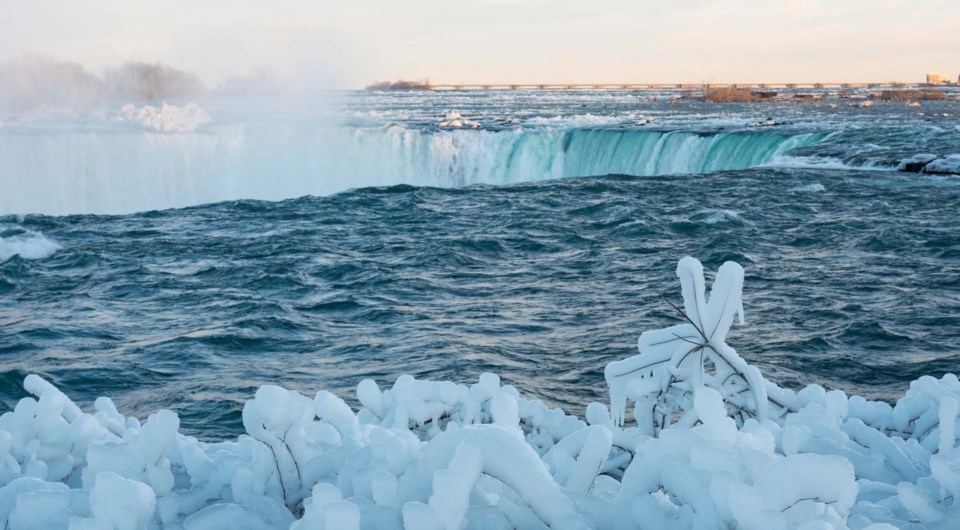Despite a milder start to winter in Ontario, one of the province's most well-known landmarks is already starting to turn into a frozen winter wonderland.
Every winter, Niagara Falls transforms into a frosty spectacle, with sections of the Canadian and American sides of the falls appearing almost frozen in time.
Picture millions of litres of water suspended in time, seemingly frozen in a majestic display unique to the winter season. However, the question arises: does this breathtaking phenomenon truly occur?
While it may appear that the falls can freeze during extremely cold temperatures, according to Niagara Parks, the answer is technically no. In the grip of particularly frigid temperatures, the mist and spray surrounding the falls form a delicate crust of ice, lending the illusion of a frozen cascade. However, beneath this seemingly static surface, the water steadfastly continues its flow.
“During particularly cold temperatures, the mist and spray begin to form a crust of ice over top of the rushing water, making it appear as though the Falls have in fact stopped. However, the water continues to flow underneath the sheets of ice," reads the Niagara Parks website.
This ultimately creates the illusion that the falls have stopped moving, while it actually continues to flow underneath the ice.
Ice Bridge
Enter the mesmerizing ice bridge, a winter spectacle typically taking shape amid extended sub-zero conditions. Often occurring in January, when a mild interlude precedes a robust southwest wind, the ice breaks free, meandering down the Niagara River and gracefully descending over the Falls. This wet ice then ascends from the river depths, freezing into an imposing mass resembling a glacier, with the potential to reach heights of up to ten stories!
Winter Flow
Niagara Parks says that during winter, 75% of the water from Lake Erie, flowing along the Niagara River, is redirected about one kilometre before the Falls for hydro-electric purposes.
This water is then reintroduced into the lower Niagara River. Consequently, the "winter flow," measured at approximately 85 million litres per minute, contrasts with the diverted "summer flow" from April to October, which typically registers at 170 million litres per minute.
As freezing temperatures persist, now is an opportune moment to plan a winter visit to witness the captivating metamorphosis of Niagara Falls.




